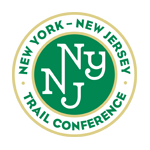Responding to rising awareness of the value of native thistles to pollinators and other wildlife, the Xerces Society developed a new guide Native Thistles: A Conservation Practitioner’s Guide. In it you will find one of the most comprehensive discussions of the importance of native thistles for pollinators and other wildlife, as well as a detailed account of the conservation status of native thistles. There is a practical section on the production of native thistle seed for use in restoration projects. This section is based on multiple years of actual native thistle seed production by the Xerces Society Pollinator Conservation Program in partnership with native seed companies.
Native Thistles: A Conservation Practitioner’s Guide is packed with resources and information on the natural history and ecology of native thistle species. The authors describe the diversity of the 62 species of native thistles in North America, showcasing several species from different regions. A list of regional guides and resources was developed to help identify native thistles and distinguish them from invasive thistles in your region. Included is one of the most comprehensive lists of over 200 species of bees, butterflies and other beneficial insects that visit native thistle flowers along with an extensive list of the native insect herbivores that feed and depend on native thistles.
Native thistles are a largely misunderstood and wrongly maligned group of wildflowers. Many species of bees, butterflies and other wildlife rely heavily on native thistle flowers. For example, monarch butterflies visit native thistle flowers more than any other wildflowers in some regions during their migration back to Mexico. Despite the significance of native thistles to our ecosystems, these plants are often targeted for eradication along with the more widely recognized invasive thistles. Many native thistles are now threatened with some species at risk of extinction.
The new Xerces conservation guide was designed to provide the tools necessary to help public land managers, native seed producers, and landowners meet this conservation challenge and take the next steps to protect this beautiful and important group of native plants.
- Log in or register to post comments
- Printer-friendly version

